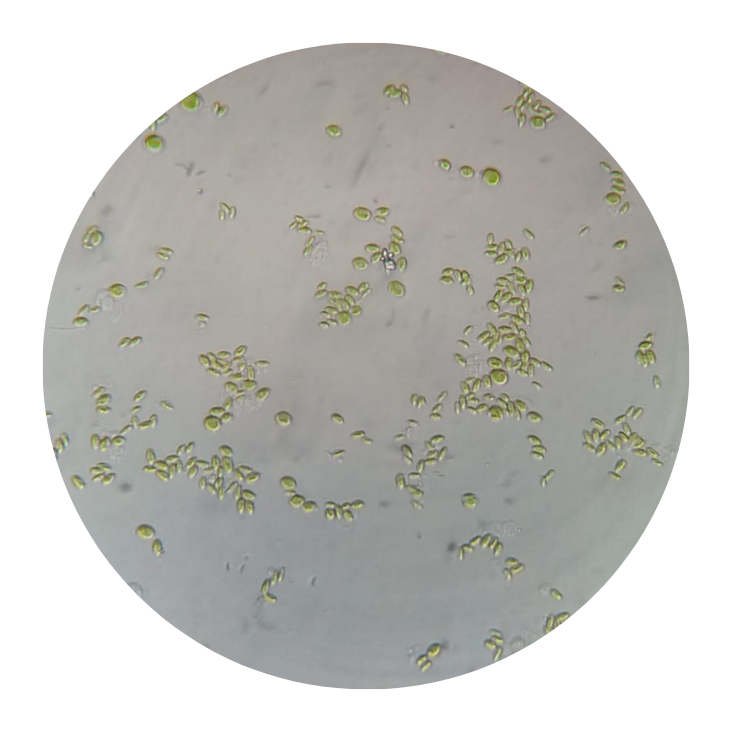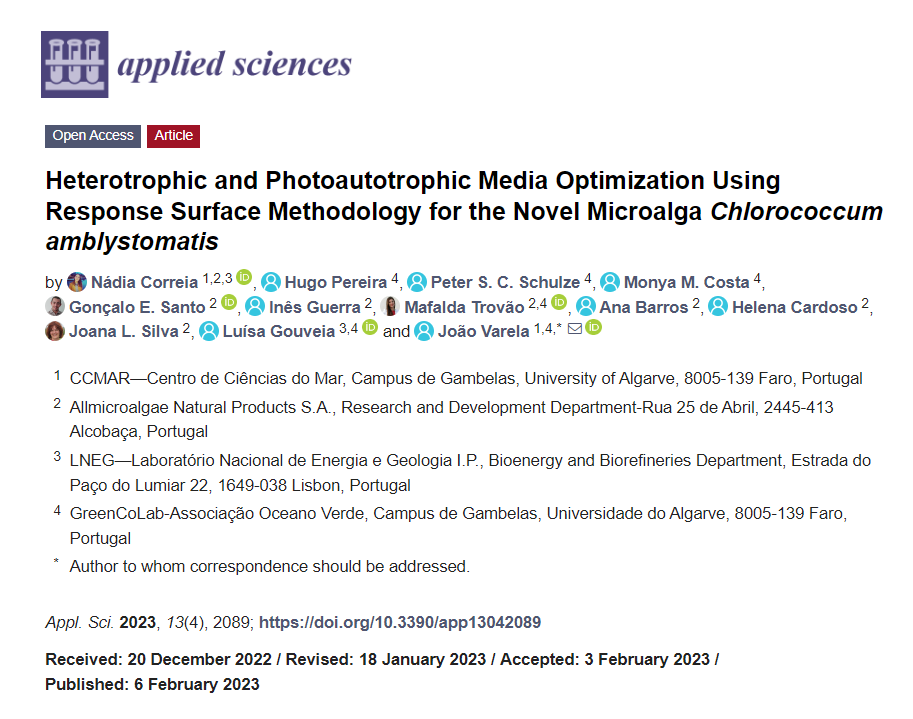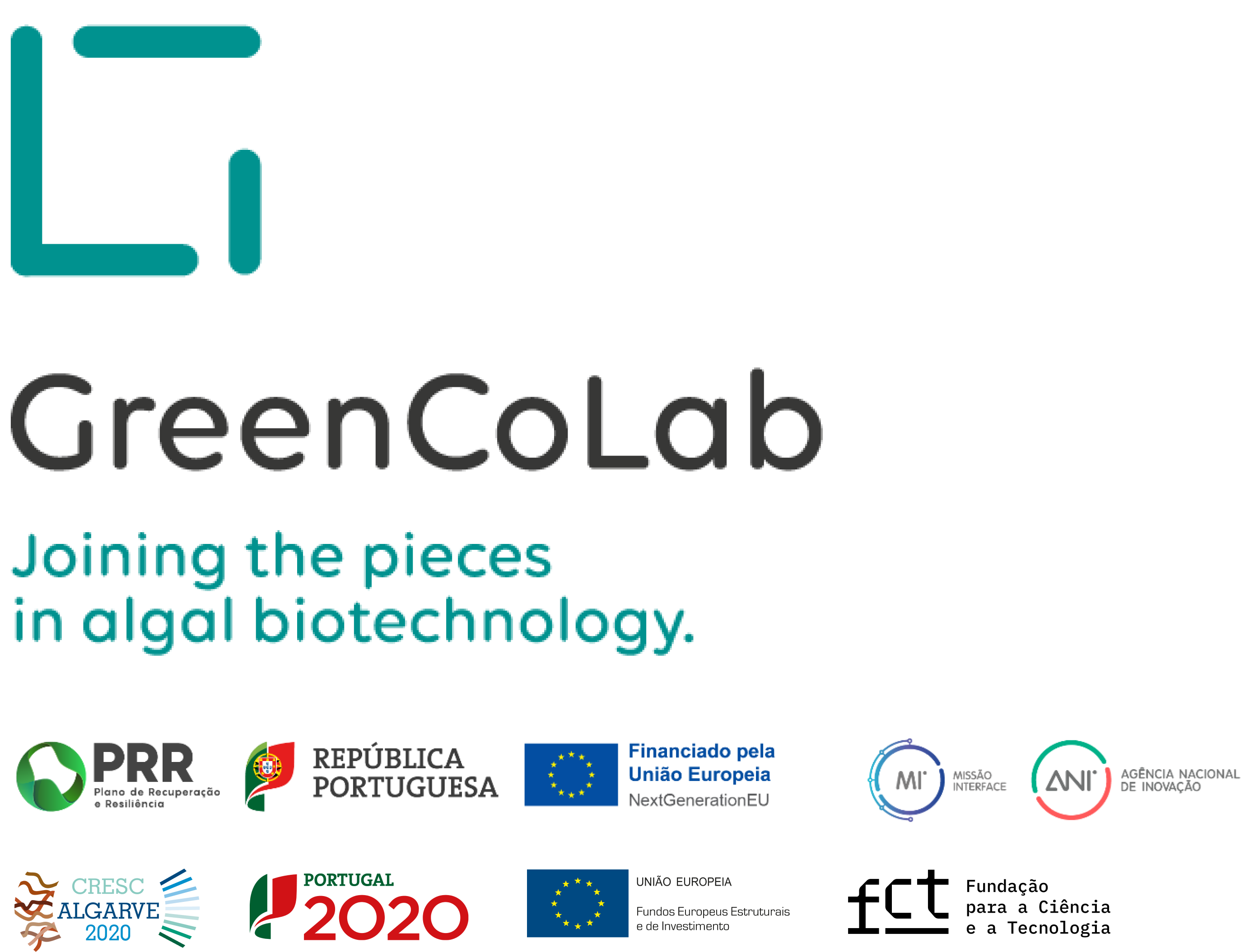

TITLE
Heterotrophic and Photoautotrophic Media Optimization Using Response Surface Methodology for the Novel Microalga Chlorococcum amblystomatis
JOURNAL
Applied Sciences
AUTHORS
Nádia Correia, Hugo Pereira, Peter S. C. Schulze, Monya M. Costa, Gonçalo E. Santo, Inês Guerra, Mafalda Trovão, Ana Barros, Helena Cardoso, Joana L. Silva, Luísa Gouveia, and João Varela
ABSTRACT
The nutritional requirements of novel microalgal strains are key for their effective cultivation and metabolite content. Therefore, the optimization of heterotrophic and photoautotrophic culture media is crucial for novel Chlorococcum amblystomatis growth. Heterotrophic and photoautotrophic biomass samples were characterized to identify the differences between their heterotrophic and photoautotrophic biomass composition and their biotechnological potential. Media optimization through surface response methodology led to 44.9 and 51.2% increments in C. amblystomatis-specific growth rates under heterotrophic and photoautotrophic growth, respectively. This microalga registered high protein content (61.49–73.45% dry weight), with the highest value being observed in the optimized photoautotrophic growth medium. The lipid fraction mainly constituted polyunsaturated fatty acids, ranging from 44.47 to 51.41% for total fatty acids (TFA) in cells under heterotrophy. However, these contents became significantly higher (70.46–72.82% TFA) in cultures cultivated under photoautotrophy. An interesting carotenoids content was achieved in the cultures grown in optimized photoautotrophic medium: 5.84 mg·g−1 β-carotene, 5.27 mg·g−1 lutein, 3.66 mg·g−1 neoxanthin, and 0.75 mg·g−1 violaxanthin. Therefore, C. amblystomatis demonstrated an interesting growth performance and nutritional profile for food supplements and feed products that might contribute to meeting the world’s nutritional demand.



